Not everyone grows up knowing for sure they want to work in television news. But almost everyone who does ends up wanting to stay in it for as long as they can.
Between the significant value of what they do for the public and the pleasant camaraderie that develops among colleagues, this is one profession that can slip into a newscaster’s skin as seamlessly as a newscaster can slip into the living room of anyone with a television set. Or a computer. Or a Facebook account. Or a smartphone.
Indeed, social media and digital communication have altered the on-air news game from the way it was years ago. But one important thing remains exactly the same: it’s all about sharing stories, which is what most TV news people value as much as any other part of the job.
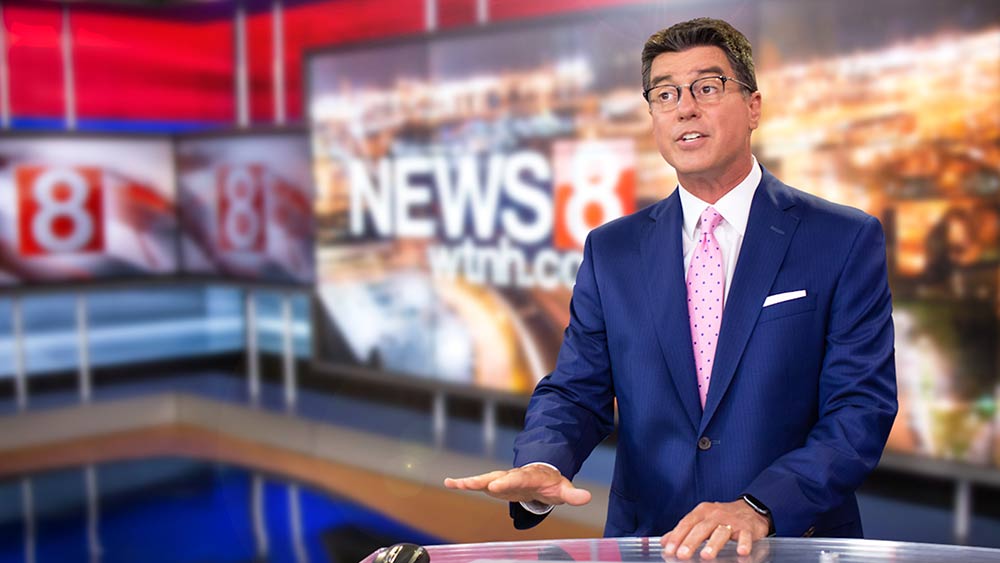
“The basics of telling a good story have not changed,” says Darren Kramer, late afternoon and evening anchor at News 8 WTNH. Kramer is one of those who had a notion of his profession long before he ever needed a job. “For some reason,” he says, “television news was the only thing I ever wanted to do. My parents were avid news viewers when I was growing up in northern Wisconsin, and it had a significant impact on me. I just had to figure out how to get there.”
He got there by obtaining a communications degree from the University of Wisconsin and then landing jobs in television news in Wausau, Wisconsin; Springfield, Massachusetts; Spokane, Washington; St. Louis, Missouri; and Chicago, before finding a long-time television home in Connecticut.
Co-anchor Ann Nyberg, who often shares his on-air schedule, has a similar how-I-got-here story.
“I was a storyteller from the time I was little,” she recalls of her childhood in South Bend, Indiana. (She was born in west Texas.) “It started with a diary my mother gave me when I was eight. I kept track of everything. My love of storytelling led me to major in journalism at Purdue University. I guess you can say that I can’t wait to find things out and then tell everyone about it.”
Kramer and Nyberg recognize that social media has refashioned the vocation from the way it was when both began.
“Years ago, it was a one-way conversation,” Kramer notes. “People watched the news on TV, and if they had something to say, they’d either write a letter or call the station. Today, the feedback is instant.”
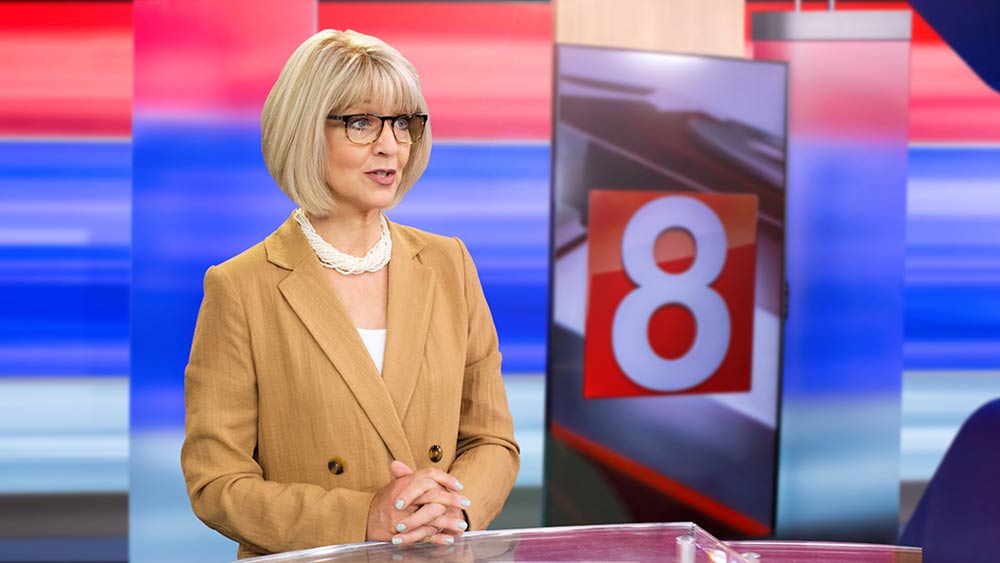
That, he says, is the good news about online networking; the bad news is that it is easier than ever for anyone with a digital device to spread “news” that may not even be factual. That makes it imperative for viewers to choose their news sources carefully – and for news organizations like WTNH to earn viewer trust through diligence and professionalism.
“There are very few exclusive stories these days, since everyone has a phone and can take photos and write about what they see,” says Nyberg. That can be a challenge for news organizations. But Nyberg and her colleagues meet that challenge daily, a fact clearly demonstrated by how long many of them have been in the business and at that station, the enduring closeness of the team, and consistently good ratings.
According to “Good Morning Connecticut” co-anchor and consumer investigator Laura Hutchinson, one interesting aspect of being an on-air television news personality is that some of the greatest joys occur behind the scenes.
“When you choose this as your profession, you often think the most exciting thing will be the television part,” she says. “But in reality, it’s what happens off the air that I like the best, such as school visits, community activities, collaborating with coworkers on big projects – even just writing and planning.”
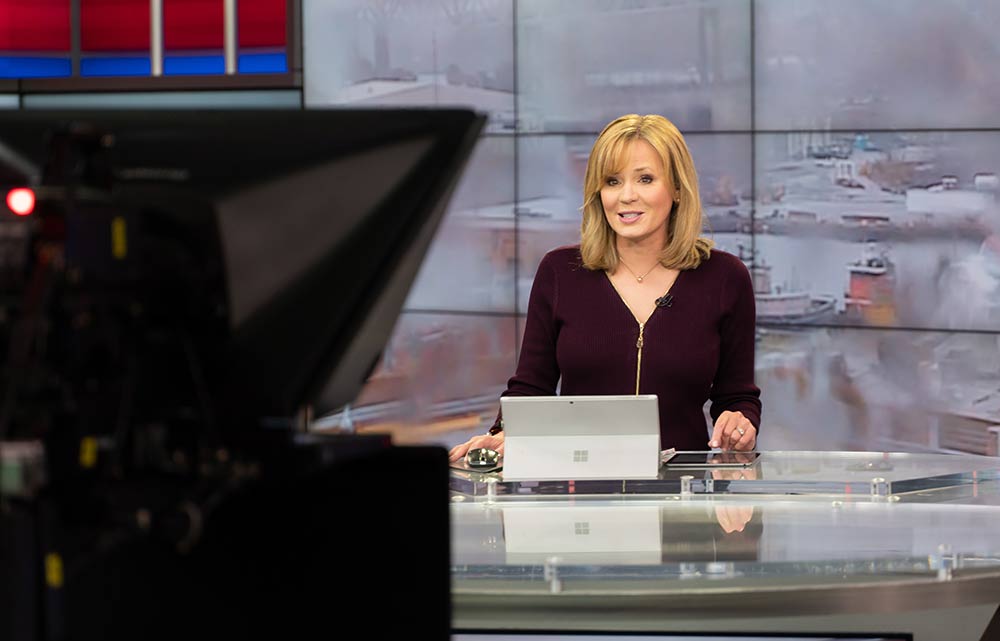
Hutchinson is another TV pro who decided as a youngster that television news was what she wanted to pursue. “I always watched News 8 with my parents when I was growing up in Hamden and once got to meet some of the anchors when they visited my school.” That seemed to clinch it for her.
Today, despite all the microphones and lights, the adrenalin-pumping deadlines, and the immediate social media feedback, what she likes best is the thrill she gets when she visits students in a classroom and sees the same kind of captivated expressions on young faces that she once had on her own. “For me, the best part of the job goes well beyond what you actually see on TV.”
Hutchinson studied political science, broadcast journalism, and broadcast production at Temple University in Philadelphia. Even though she entered the business just a dozen years ago, she acknowledges that social media in her earliest days on the job was nothing like it is today, which makes her realize how much TV news has changed in a relatively short period of time.
“With digital communications we reach more people than ever before, but the competition with all other sources for getting and sharing the news is huge,” she says. On the other hand, she and her colleagues have decisive technological and transportation advantages over social media users, particularly for breaking news.
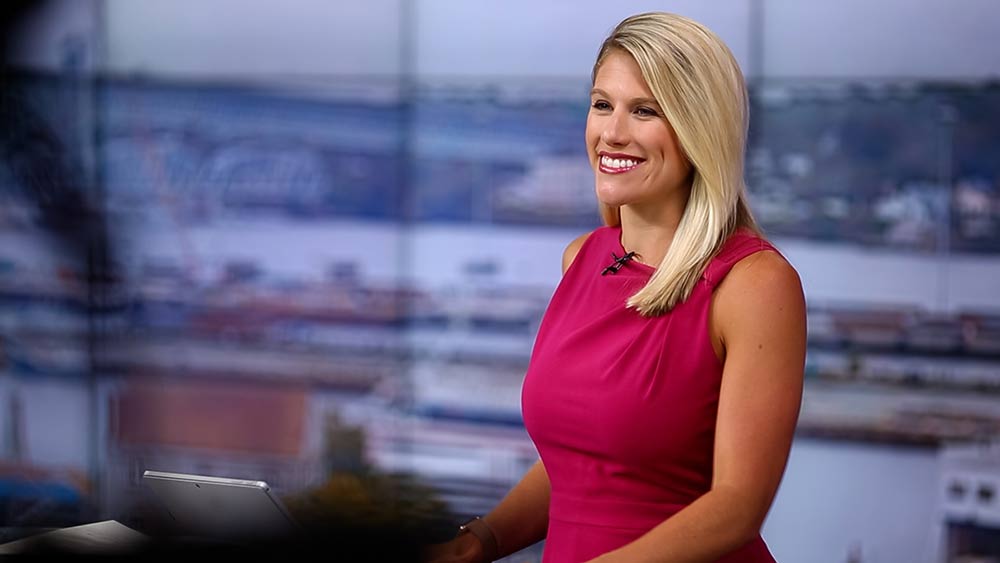
Being on air – whether in a studio or out in the field – means being in the public eye. That, in turn, requires TV news personnel to be constantly mindful of what they’re wearing, their overall mood and comportment, whether or not they have a solid handle on the facts of the stories they are covering, and if the names they intend to mention will be properly pronounced. There is no denying that YouTube is loaded with hundreds of videos of on-air gaffes, including wardrobe malfunctions, unexpected interruptions, and inadvertent references to topics that would normally be off-limits. What’s more, the news itself can be relentless, adding to the stress.
“Yes, it’s all bit more unscripted than I had anticipated,” admits noon anchor and medical reporter Lisa Carberg. She cites the time period between August 2011 and December 2012, during which Connecticut experienced the devastation caused by Hurricane Irene, the Sandy Hook school massacre, and Superstorm Sandy. It was, in essence, one long, uninterrupted news cycle that shook even the toughest reporters. “And now, guiding people through the pandemic is another challenge, made all the more demanding by the need to stay safe myself for high-risk family members,” Carberg says.
Her road to news broadcasting started with her love of writing, and the skill to back it up. “I thought I’d end up working for a newspaper or a magazine. But I interned at a television station during college and saw how impactful it was to tell stories with video and sound. I never looked back.”
An Old Saybrook native, Carberg studied communications and journalism at Florida State University and Suffolk University in Boston. She began her broadcast career as a reporter and photographer in Wilmington, North Carolina, then anchored in Savannah, Georgia, followed by a stint with Fox News, and finally a return to Connecticut.
“Being the noon anchor and a medical reporter feels like home to me,” she says. “It’s a nice fit.”
As imperative as it is for Carberg and her coworkers to accurately report what’s happening in the world, some know it’s just as imperative to accurately report what’s happening in the sky. That’s where WTNH’s Joe Furey comes in. After all, weather is news.
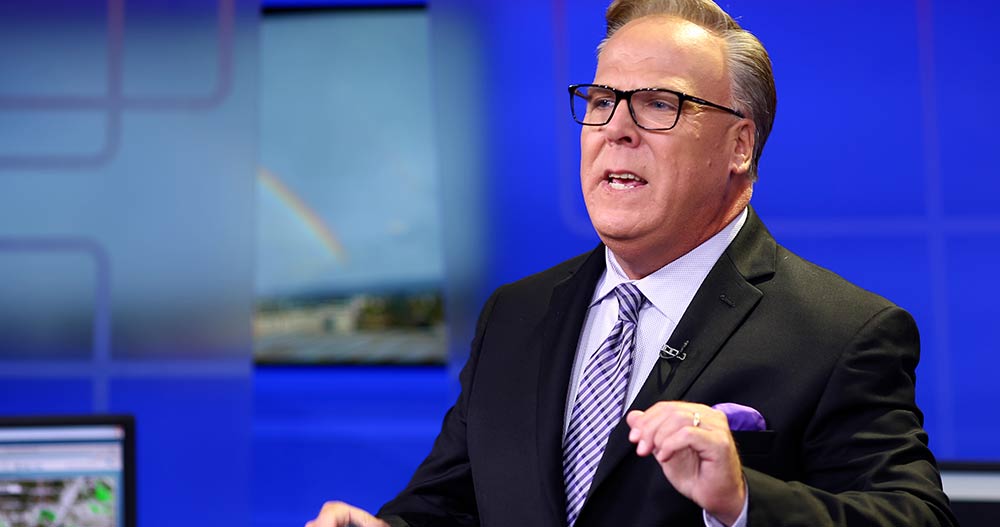
Furey, co-chief meteorologist, did not intend to go into television news. “It was never on my radar,” he confesses. Instead, he wanted to run a weather service and be on the radio. After receiving degrees in meteorology and business from Pennsylvania’s Villanova University, Furey worked at Western Connecticut State University. There, he conducted meteorology research as assistant director of the school’s Weather Center, which was founded by the late Dr. Mel Goldstein, who eventually became a legendary weathercaster at WTNH.
“Dr. Mel had extremely high expectations and demands,” Furey recalls. “One was that you were at work at 4 a.m. and didn’t end your day until after 6 p.m. So I was trained to work long and work hard right from the start.”
He says that in the past, his phone would ring constantly at the station’s weather office, with people asking whether or not to postpone their outdoor plans. “But now everyone essentially has radar in their own hands with their phones and weather apps.” That’s one difference from the old days. “But also with social media,” Furey adds, “we can be so much more connected with people. And now viewers know much more about our personal lives, too.”
WTNH first went on the air in 1948 as WNHC-TV, founded by the Elm City Broadcasting Corp. as an affiliate of the old DuMont Television Network. It is Connecticut’s oldest television outlet and the second oldest in New England. Back then, with no studio facility of its own, the station simply sent out the signal of DuMont’s New York City flagship station. The WTNH of today resulted from dozens of changes in television broadcasting rules and regulations and many corporate mergers and sales. In addition to its main studios in New Haven, the station operates bureaus in New London and Hartford.
One of the earliest slogans used by the station, from the early 1970s, was “Let’s Get Together on Channel 8.” That went through many changes over the years, including “Let Us Be the One,” “We’re With You,” and “If It’s Connecticut, It Must Be Channel 8.” Now it’s “Who’s Got Your Back?” which reflects how the station’s on-air personalities try so hard to have the backs of their viewers, the backs of their coworkers and, in some significant ways, their very own backs. In other words, they want to enjoy what they do for a living – and even in these days of 24-hour news cycles and social media influence, they make sure they do.
“One way to measure success is by your ability to have a darn good time getting the story behind the story,” emphasizes Nyberg.
“For me, success is measured through happiness,” says Hutchinson. “I tell my son how important it is to apply yourself so that you can end up doing what you love to do. Because when you’re happy at work, it just makes it a little easier to enjoy all the happiness at home.”
Photographed by Anthony Quinn/WTNH




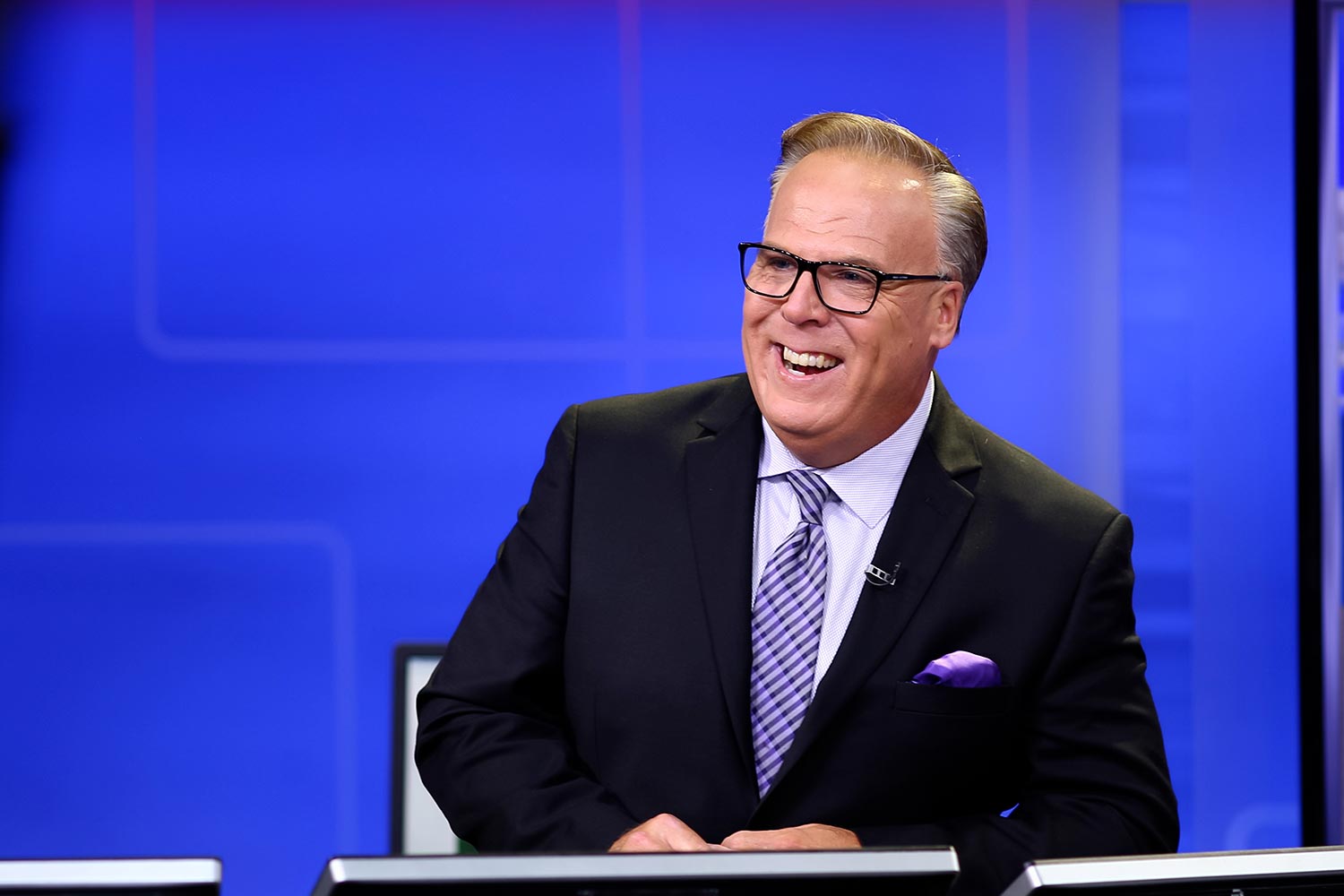



More Stories
Winter Wellness: Simple Ways to Feel Your Best All Season
A Hallmark Movie Featuring Slightly Old Folks
Hartford and Raleigh: A Tale of Two Hockey Hubs